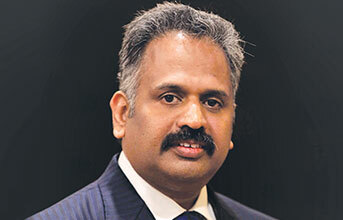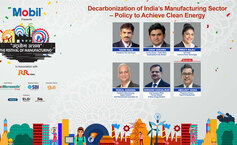
The manufacturing industry in India is on the precipice of transformation—a shift to Industry 5.0, where humans and machines work together to boost efficiency and productivity. The key focus area at the heart of this shift is the pursuit of quality, where the dual combination of artificial intelligence (AI) and machine learning (ML) technologies plays a pivotal role. According to the PwC India Survey, Indian companies are showing an upward trend towards adopting analytics and AI, with a current implementation rate of 54 per cent.
One of the key sectors to face the most impact in manufacturing is original equipment manufacturers (OEMs). Tasked with delivering components to other industries, the rising demand for global standard goods across different sectors means that OEMs must meet the rising demand. To do so, OEMs have turned to technology to build smarter factories. But this transition brings to the forefront three big bottlenecks: legacy infrastructure, rising input concerns in data integration, and skill gaps.
Let's take a closer look at what these challenges are: Treading new horizons through a holistic approach
Integration of new technologies with existing processes and legacy systems offers a complex challenge, especially with compatibility. Any form of tech integration with a process-heavy system like manufacturing throws up tons of data. Gathering data from different sources and leveraging it to provide an integrated perspective is extremely challenging. Another major challenge is the skilled workforce shortage to work with the new technologies.
To overcome these challenges, OEMs must leverage the latest integrated technology solutions to build smarter factories that are future-ready and can cater to global market demands. These solutions will help reduce errors and turnaround time while allowing them to meet the growing demand without compromising quality—a resilient supply chain that can function even during uncertain times.
The foundation of digital transformation to build smarter factories rests on three pillars: robotics, AI, ML, and cloud-native systems. In manufacturing (seemingly more than other sectors), the growing need for data management is most evident in the development of digital twins.
A Capgemini report from last year highlighted that 60 per cent of major sector organisations believe that digital twins boost operational efficiency and sustainability, improving resource use, emissions, transport networks, and employee safety. Each of these functions are critical in helping OEMs enhance efficiency, reduce errors, and boost production while minimising costs.
Let's explore some of the technologies that are crucial for OEMs:
• Robotics for process automation
By leveraging robots to perform repetitive tasks, OEMs can create a collaborative environment to ensure that human abilities are enhanced. This will bring in the necessary automation to ensure that errors are kept to a minimum while quality is maintained, as robots can repeat the process numerous times without tiring out. These robots will not replace humans but rather work together with them; hence, they are called cobots. The focus of Industry 5.0 is on building a collaborative ecosystem for humans and robots to work together.
Another advantage offered by this approach is improved workforce safety as dangerous tasks are accomplished by robots.
• AI and ML for process optimisation
Integrating any form of technology to create smart factories means large amounts of data being generated. This data is a gold mine of information, and this is where AI and ML come in. AI can be used for ML solutions where neural networks can analyse data faster, better, and more accurately for decision-making. One of the biggest advantages of this is predictive maintenance, which helps optimise the manufacturing process. This can be as simple as predicting machine failure, which will allow OEMs to get ahead of this bottleneck and thereby reduce downtime. Some of the other benefits of AI and ML in manufacturing include demand forecasting, reduced waste of raw materials, and improved supply chain efficiency.
• Cloud-native systems for agility and scalability
Cloud-native systems are key to integrating everything in the manufacturing process. Designed to run on the cloud, these systems can be integrated with existing systems without redesigning current applications. It can be deployed faster with lower downtime and can be accessed from across the globe within a company for real-time updates. This allows OEMs to scale their production up or down as per demand and add more sections as the business expands without compromising on data security. As they are built for speed and scale, cloud-native systems are a key aspect for OEMs looking to expand while reducing costs and without any impact on the quality of the goods being produced.
• Dawn of a New Era of Smarter Factories
Quality and cost minimisation are two key phrases that drive digital transformation in the manufacturing sector. Before getting started on the journey of transitioning to smarter factories, OEMs must conduct research and collaborate with partners who understand current challenges, scalability, cost-effectiveness, and the potential for integrating innovation and compatibility with current systems. This will help in eliminating any redundancies while integrating the system. OEMs in India are pushing for automation and a transition to smart factories. It is both timely and crucial, as it helps align India's manufacturing industry with its global counterparts and be future-ready while being environmentally sustainable.



























